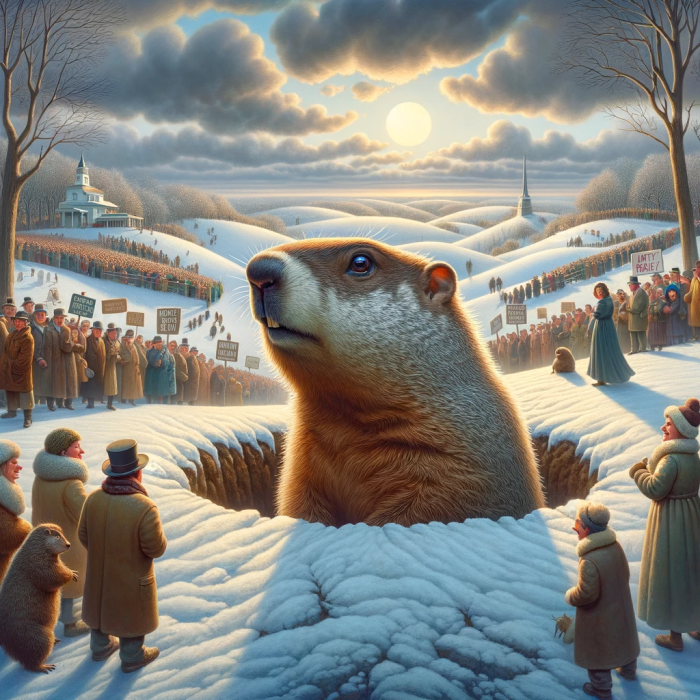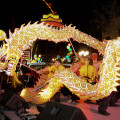
Every February 2nd, eyes in North America turn to a furry little prognosticator named Punxsutawney Phil. Groundhog Day, celebrated in towns across the continent, hinges on Phil’s shadow (or lack thereof) predicting the length of winter. But this quirky tradition delves much deeper than just a weather forecast, boasting a rich history, vibrant celebrations, and even a touch of Hollywood magic.
A Furry Legacy: Unveiling Groundhog Day’s History
While the exact origins remain shrouded in folklore, Groundhog Day likely blends European traditions with Pennsylvania Dutch customs. Superstitions about hedgehogs predicting spring in Europe may have crossed the Atlantic with German immigrants, evolving to incorporate the groundhog, a native North American burrowing mammal. The first official Groundhog Day celebration in Punxsutawney, Pennsylvania, dates back to 1887, solidifying the town as the undisputed “Groundhog Capital of the World.”
Celebrating the Groundhog: From Punxsutawney to Your Backyard
Punxsutawney takes Groundhog Day to the next level. Thousands gather before dawn to witness Phil emerge from his burrow. If he sees his shadow, six more weeks of winter are expected. If not, an early spring is on the horizon. Festivities include live music, parades, and even a Groundhog Ball!
Beyond Punxsutawney, the day is celebrated in diverse ways. Some partake in shadow-watching rituals in their own backyards, while others enjoy Groundhog Day-themed foods like groundhog sausage and pancakes. Many schools and community centers host educational events about groundhogs and their role in the ecosystem.
Beyond the Burrow: Groundhog Day Takes the Big Screen
Bill Murray’s iconic 1993 film “Groundhog Day” catapulted the tradition into pop culture. The movie tells the story of Phil Connors, a jaded weatherman, trapped in a time loop reliving Groundhog Day endlessly. His journey from egocentric cynic to self-improvement champion resonated with audiences, adding a layer of philosophical depth to the lighthearted holiday.
Groundhog Day: More Than Just a Prediction
At its core, Groundhog Day is a celebration of hope and anticipation for spring’s arrival. It’s a reminder to embrace new beginnings, break free from routines, and appreciate the little things in life. Whether you’re a Punxsutawney regular or a backyard shadow-watcher, Groundhog Day offers a chance to step outside the ordinary and welcome the possibility of change, just like Phil Connors himself.
So, will Punxsutawney Phil see his shadow this year? Only time, and the furry oracle himself, will tell. But one thing’s for sure: Groundhog Day remains a charming tradition, reminding us that even the coldest winters eventually give way to the warmth of spring.
Article above assisted by Google Bard, article below assisted by ChatGPT.
Groundhog Day: A Deep Dive into Tradition and Pop Culture
Introduction to Groundhog Day Groundhog Day, a popular North American tradition, is celebrated annually on February 2nd. This event, deeply rooted in folklore, captures the imagination of many with its unique blend of weather prediction and cultural celebration. It revolves around the idea that a groundhog, emerging from its burrow, can predict the arrival of spring based on whether it sees its shadow.
Historical Origins The origins of Groundhog Day can be traced back to ancient European weather lore, where a sacred bear or badger made weather predictions. The tradition was brought to the United States by German immigrants, particularly in Pennsylvania, where it evolved to involve a groundhog. The first official Groundhog Day celebration was recorded in Punxsutawney, Pennsylvania, in 1887, where it has since become a major event.
The Groundhog Day Ceremony The most famous Groundhog Day celebration occurs in Punxsutawney, home to Punxsutawney Phil, the legendary groundhog. Each year, thousands gather at Gobbler’s Knob, a rural area outside the town, to witness Phil’s prediction. The ceremony involves a select group, known as the Inner Circle, who are responsible for caring for Phil and interpreting his weather prediction. If Phil sees his shadow, it means six more weeks of winter; if not, an early spring is expected.
Celebrations Across North America While Punxsutawney is the epicenter, numerous other North American towns also celebrate Groundhog Day, each with their own local groundhogs and traditions. These events often include festive activities like parades, speeches, and various groundhog-themed events, appealing to both locals and tourists.
Cultural Impact and the Groundhog Day Movie Groundhog Day transcends its folkloric roots, significantly impacting popular culture, most notably with the 1993 film “Groundhog Day.” Directed by Harold Ramis and starring Bill Murray, this comedy has become a cultural icon. The film’s plot revolves around a weatherman who finds himself living the same day repeatedly. This movie not only popularized the holiday to a global audience but also contributed a new phrase to the English language, with “Groundhog Day” now signifying a repetitive, unchanging pattern.
Educational and Scientific Perspectives Educationally, Groundhog Day serves as an opportunity to teach children about weather patterns and groundhog biology. Scientifically, however, groundhogs’ weather predictions hold no real accuracy. Meteorologists often highlight the fun, rather than the factual nature of the predictions.
Groundhog Day in the Digital Age With the advent of social media and online streaming, Groundhog Day celebrations have reached a wider audience. Punxsutawney Phil’s prediction is streamed live, and social media buzzes with groundhog-themed content. This digital expansion allows more people to participate in the tradition, regardless of geographical location.
Conclusion: A Blend of Tradition and Modernity In conclusion, Groundhog Day is a unique blend of ancient tradition, local celebration, and modern pop culture. It embodies a sense of community and continuity, while also adapting to contemporary times. Whether one views it as a quaint tradition, a tourist attraction, or a cultural phenomenon, Groundhog Day remains a charming and enduring part of North American folklore.
Groundhog Day continues to captivate the imagination and brings a sense of joy and whimsy to the heart of winter, reminding us of the enduring power of traditions and the ever-evolving nature of cultural celebrations.






